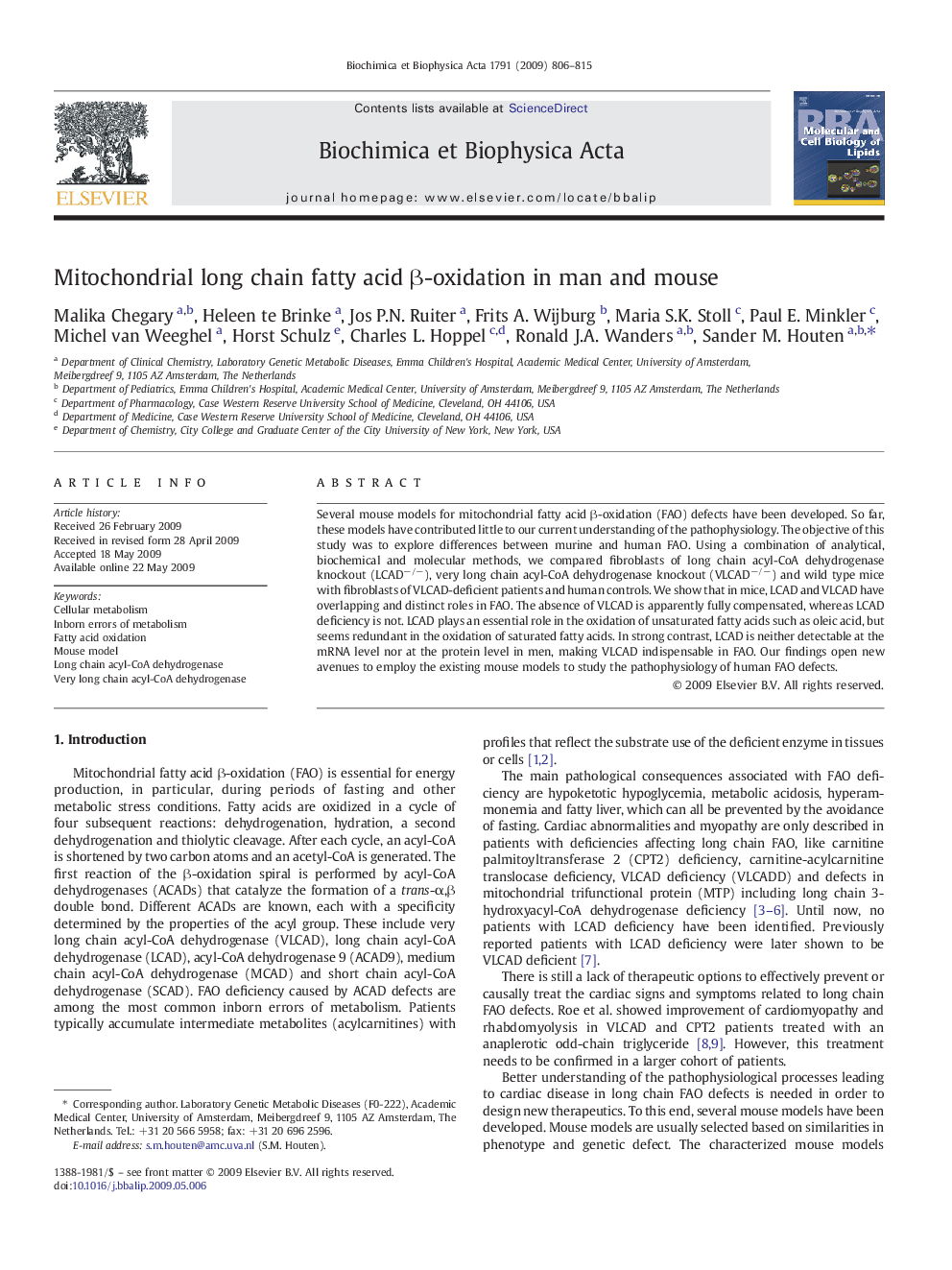| Article ID | Journal | Published Year | Pages | File Type |
|---|---|---|---|---|
| 1949883 | Biochimica et Biophysica Acta (BBA) - Molecular and Cell Biology of Lipids | 2009 | 10 Pages |
Several mouse models for mitochondrial fatty acid β-oxidation (FAO) defects have been developed. So far, these models have contributed little to our current understanding of the pathophysiology. The objective of this study was to explore differences between murine and human FAO. Using a combination of analytical, biochemical and molecular methods, we compared fibroblasts of long chain acyl-CoA dehydrogenase knockout (LCAD−/−), very long chain acyl-CoA dehydrogenase knockout (VLCAD−/−) and wild type mice with fibroblasts of VLCAD-deficient patients and human controls. We show that in mice, LCAD and VLCAD have overlapping and distinct roles in FAO. The absence of VLCAD is apparently fully compensated, whereas LCAD deficiency is not. LCAD plays an essential role in the oxidation of unsaturated fatty acids such as oleic acid, but seems redundant in the oxidation of saturated fatty acids. In strong contrast, LCAD is neither detectable at the mRNA level nor at the protein level in men, making VLCAD indispensable in FAO. Our findings open new avenues to employ the existing mouse models to study the pathophysiology of human FAO defects.
